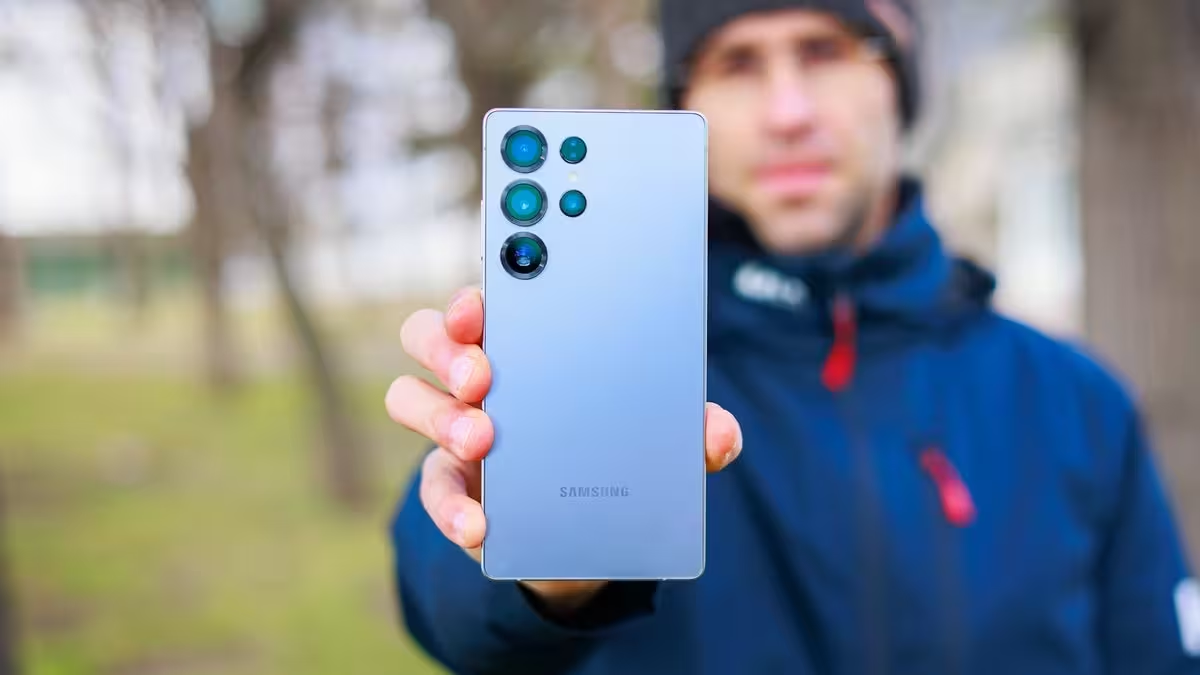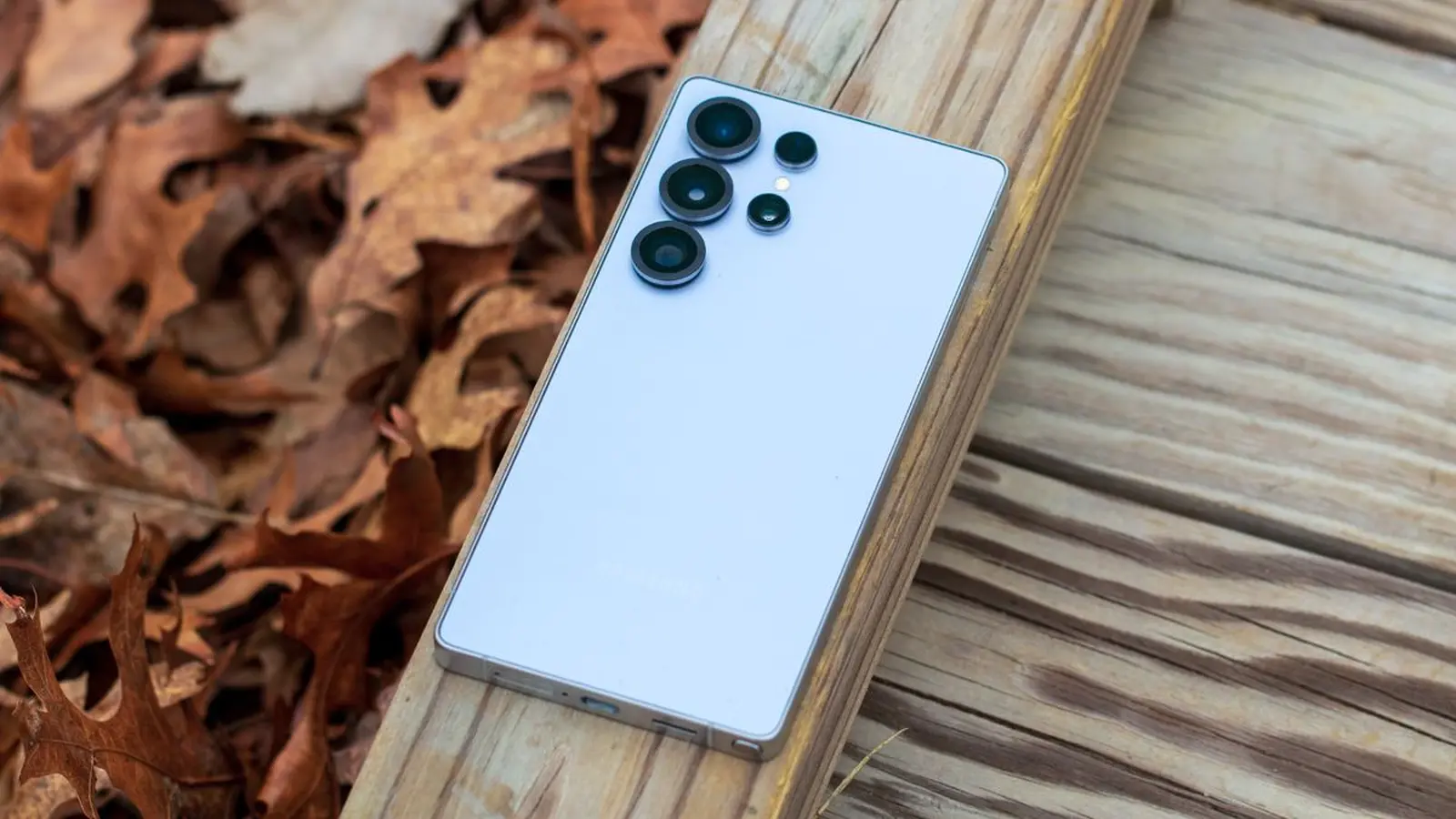5 Minutes
A major screen upgrade with an AI twist
Early leaks and industry whispers suggest Samsung’s next flagship, the Galaxy S26 Ultra, will deliver more than incremental horsepower — it may ship with a fundamentally different OLED display that uses AI to protect on-screen privacy. Developed by Samsung Display and demoed at MWC and K-Display 2025, the so-called Flex Magic Pixel technology is reportedly moving into mass production, increasing the chances it will debut on the S26 Ultra and potentially reach Galaxy foldables in 2026.
What is Flex Magic Pixel?
Flex Magic Pixel is an AI-driven pixel control system for OLED panels. Instead of a single static layer or a physical privacy filter, the display intelligently manipulates individual pixels and viewing angles in real time. When sensitive content appears on-screen — for example, mobile banking, authentication flows, or private messages — the system can narrow the effective viewing cone so people at oblique angles see a darkened screen while the user directly in front retains full brightness and color fidelity.
How it differs from traditional privacy solutions
Conventional privacy screen protectors darken the entire image and often reduce brightness and color accuracy. Flex Magic Pixel promises privacy without those trade-offs by applying selective, software-driven control at the pixel level. That approach could preserve peak luminance and HDR performance while still blocking side glances, making it one of the more practical, display-native applications of AI in consumer hardware.
Features: What to expect from the Galaxy S26 Ultra display
- AI-managed viewing-angle control via per-pixel adjustments (Flex Magic Pixel).
- Higher peak brightness and maintained color gamut compared with mechanical privacy filters.
- Potential roll-out to foldable Galaxy models in 2026 once mass production ramps up.
- Seamless system integration to detect sensitive apps and automatically apply privacy modes.
Product advantages and practical use cases
Flex Magic Pixel offers several real-world benefits. For commuters and users working in public spaces, the display can reduce shoulder-surfing risks without forcing you to dim the screen manually or accept poorer image quality. Enterprise users, journalists, and anyone handling confidential data on the go could see meaningful privacy gains. Additionally, the approach preserves multimedia viewing for streaming and gaming when privacy isn't needed, avoiding the compromises of physical screen filters.

Comparisons: How the S26 Ultra stacks up against rivals
If Samsung ships Flex Magic Pixel on the Galaxy S26 Ultra, it would be a differentiator among Android flagships. Apple’s iPhone line has not adopted a comparable per-pixel privacy mode, focusing instead on hardware and software security. With rumors pointing to stronger RAM performance, faster charging, and a major camera upgrade (notably a brighter f/1.4 low-light lens), the S26 Ultra could target both performance-minded prosumers and privacy-conscious users. It will likely square off against Apple’s upcoming iPhone 17 Pro Max and later the iPhone 18 in the 2026 flagship market.
Camera and performance upgrades
Beyond the display, leaks indicate Samsung may increase RAM speeds, raise fast-charging ceilings, and push a significant camera enhancement for improved low-light capture with an f/1.4 aperture. Combined with the Flex Magic Pixel display, these upgrades paint the S26 Ultra as a comprehensive flagship refresh rather than a modest iteration.
Market relevance and strategic implications
Mass production signals Samsung Display’s confidence in Flex Magic Pixel. If the tech reaches consumer devices at scale, it could prompt competitors to investigate similar pixel-level privacy methods or push software-level mitigations. For Samsung, integrating a display-based privacy feature complements its broader security messaging and adds a tangible, user-facing capability that goes beyond incremental specs battles.
Use cases and buyer considerations
Who benefits most? Frequent travelers, business users handling sensitive documents, and consumers in dense urban environments are obvious candidates. For content creators and mobile gamers, preserving brightness and color while selectively enabling privacy adds practical value. Buyers should watch for any potential impacts on battery life, display calibration, or app compatibility once Samsung publishes official specs.
Final take: Why this matters
Flex Magic Pixel, if implemented as reported, would give the Galaxy S26 Ultra a unique selling point in an increasingly crowded flagship field. Privacy that doesn't sacrifice display performance addresses a tangible pain point. Pair that with rumored improvements in RAM, charging speed, and camera optics, and the S26 Ultra is shaping up to be one of the most interesting premium phones slated for 2026. For tech enthusiasts and professionals who prioritize both performance and privacy, this could be a compelling combination.
Source: phonearena


Leave a Comment